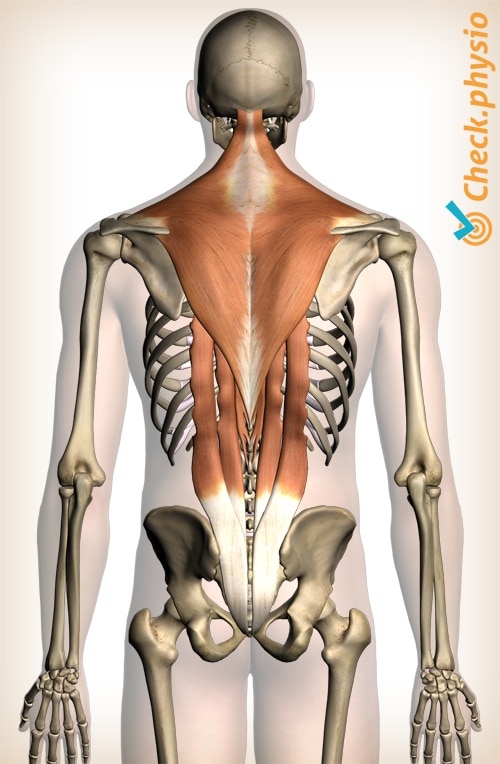Muscle injury of the upper back
Thoracic muscle injury
The upper back is the area from the base of the neck to the waist. There are several muscles that work together here to facilitate a number of movements.

It is difficult to distinguish between a muscle tear or another injury of the upper back. The pain can also come from the spinal column. A physiotherapist can help to diagnose the cause of the symptoms.
Description of condition
Tearing or spraining muscles is a common cause of back pain. This can happen when the muscle fibers in the muscle are stretched excessively. The severity of the injury depends on the number of muscle fibers that tear. In a slight sprain, only a few fibers are torn. In more severe cases a larger section of the muscle is torn.
Muscles that may be affected include: the erector spinae, the trapezius, the rhomboideus, the latissimus dorsi, the levator scapulae and the muscles that are located between the ribs (intercostal muscles).
Cause and history
The symptoms usually start at a clearly defined moment or from severe physical exertion. Sometimes the symptoms develop gradually as a result of prolonged overloading.
Signs & symptoms
Contracting the affected muscles may cause pain, for example bending or stretching your back, lifting objects or pulling the shoulder blades together. The pain often decreases when at rest. Direct pressure on the affected area of the muscle is painful. Typical symptoms may include: muscle weakness, muscle spasms, swelling, inflammation and cramps.
Diagnosis
Treatment
Exercises
Take a look here at the online exercise program with exercises for muscular injuries in the upper back.
You can check your symptoms using the online physiotherapy check or make an appointment with a physiotherapy practice in your locality.
References
Fruth, S.J. (2006). Differential diagnosis and treatment in a patient with posterior upper thoracic pain. Phys Ther. 2006; 86:254-268.


